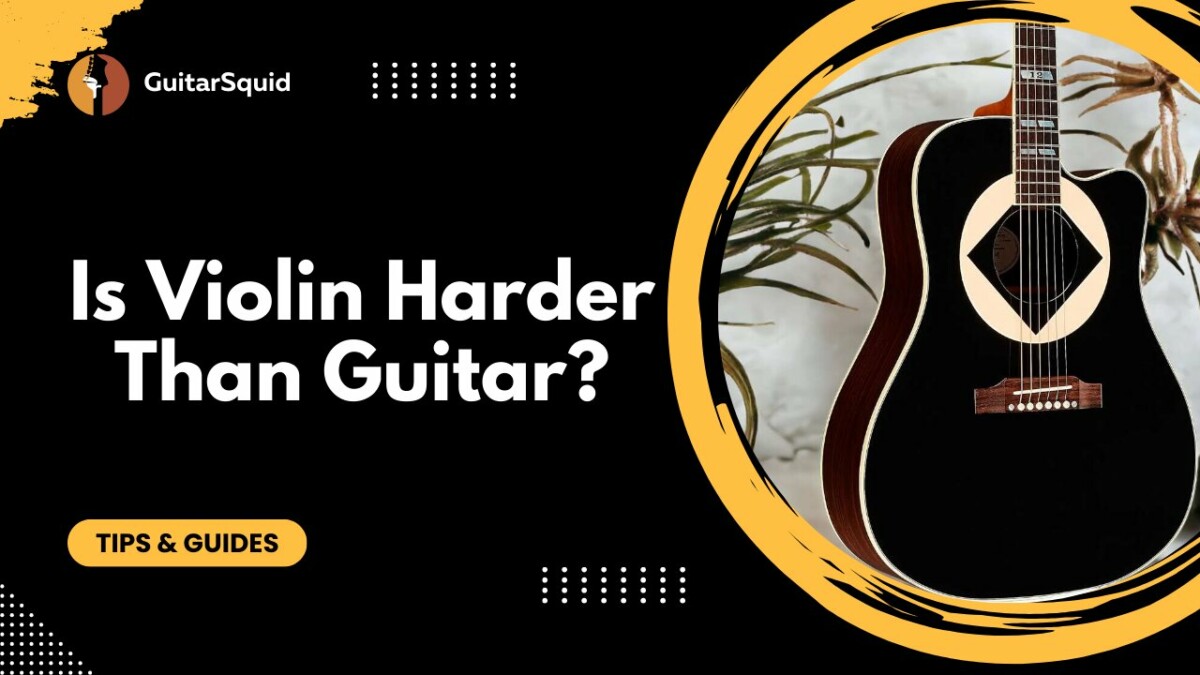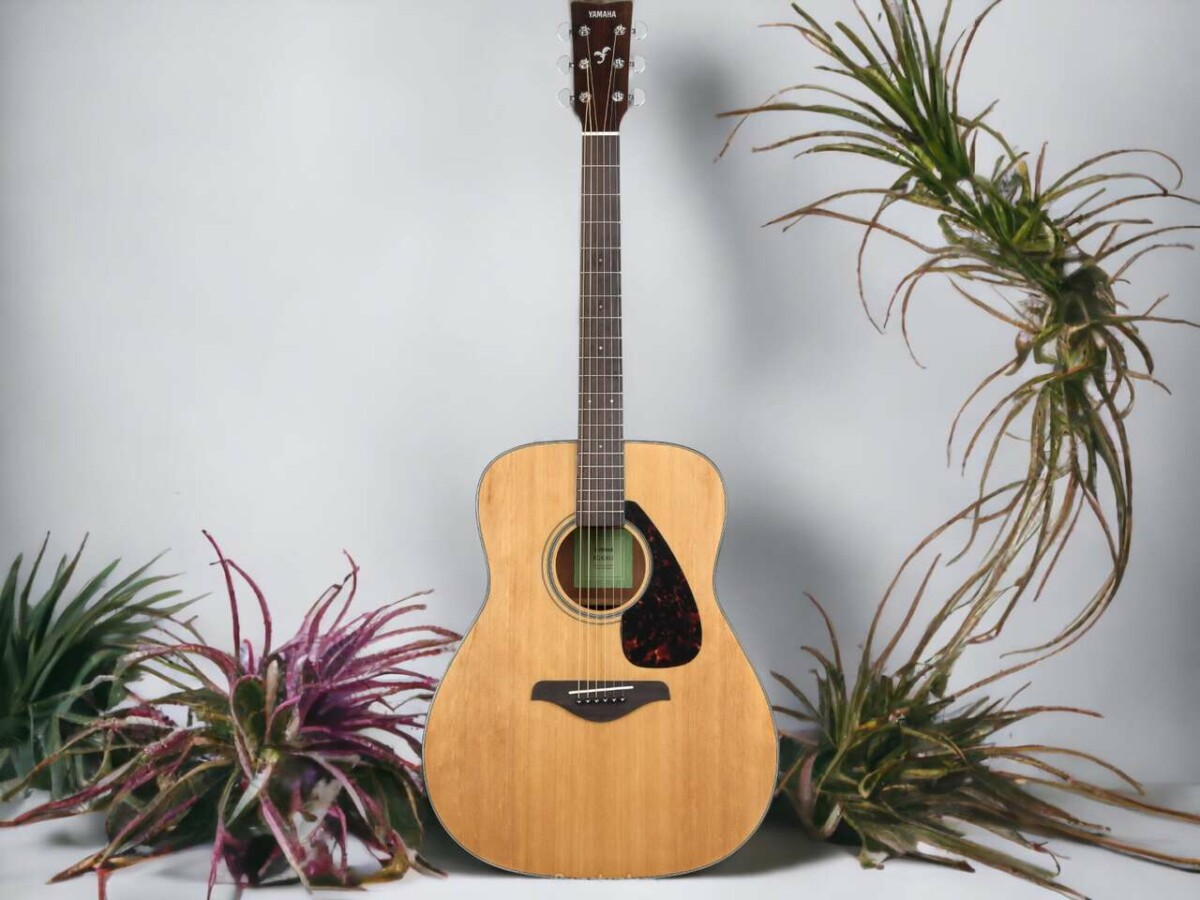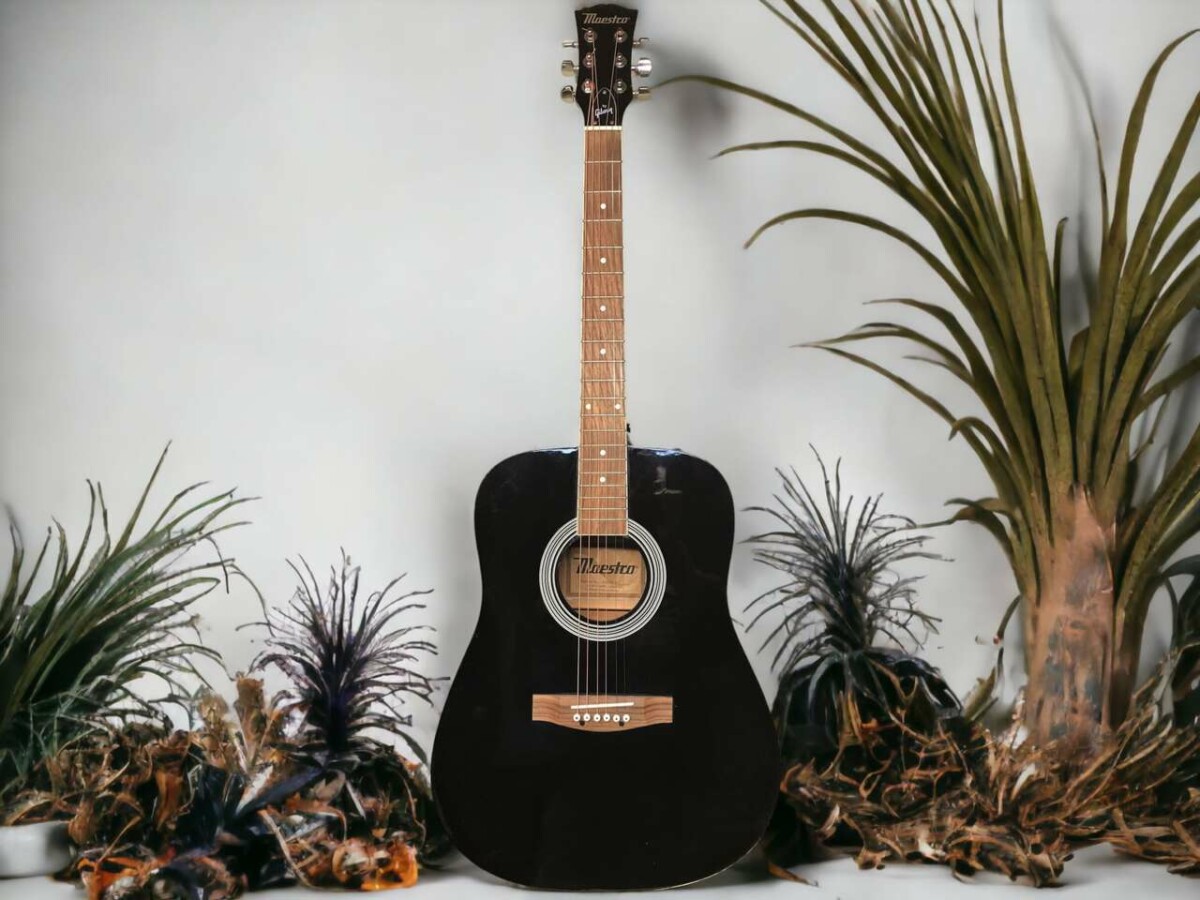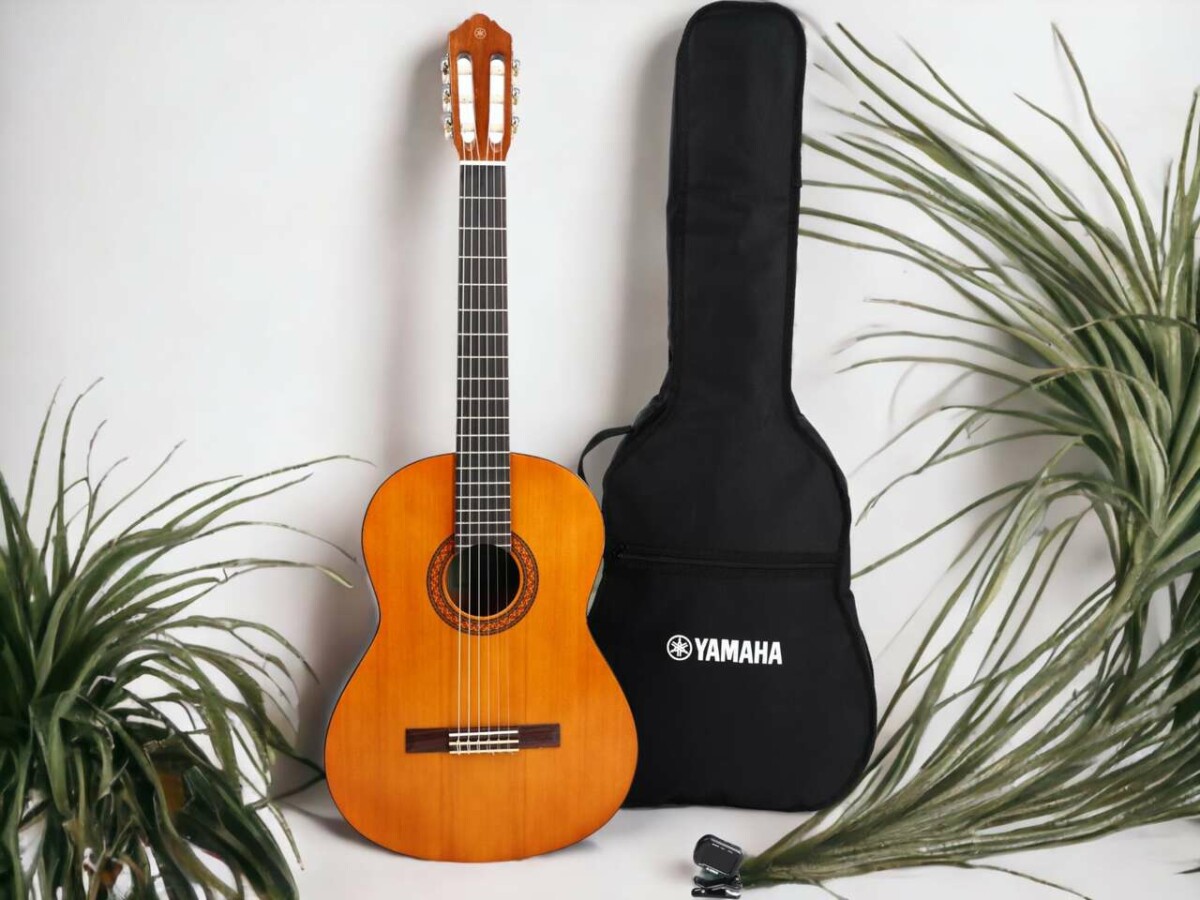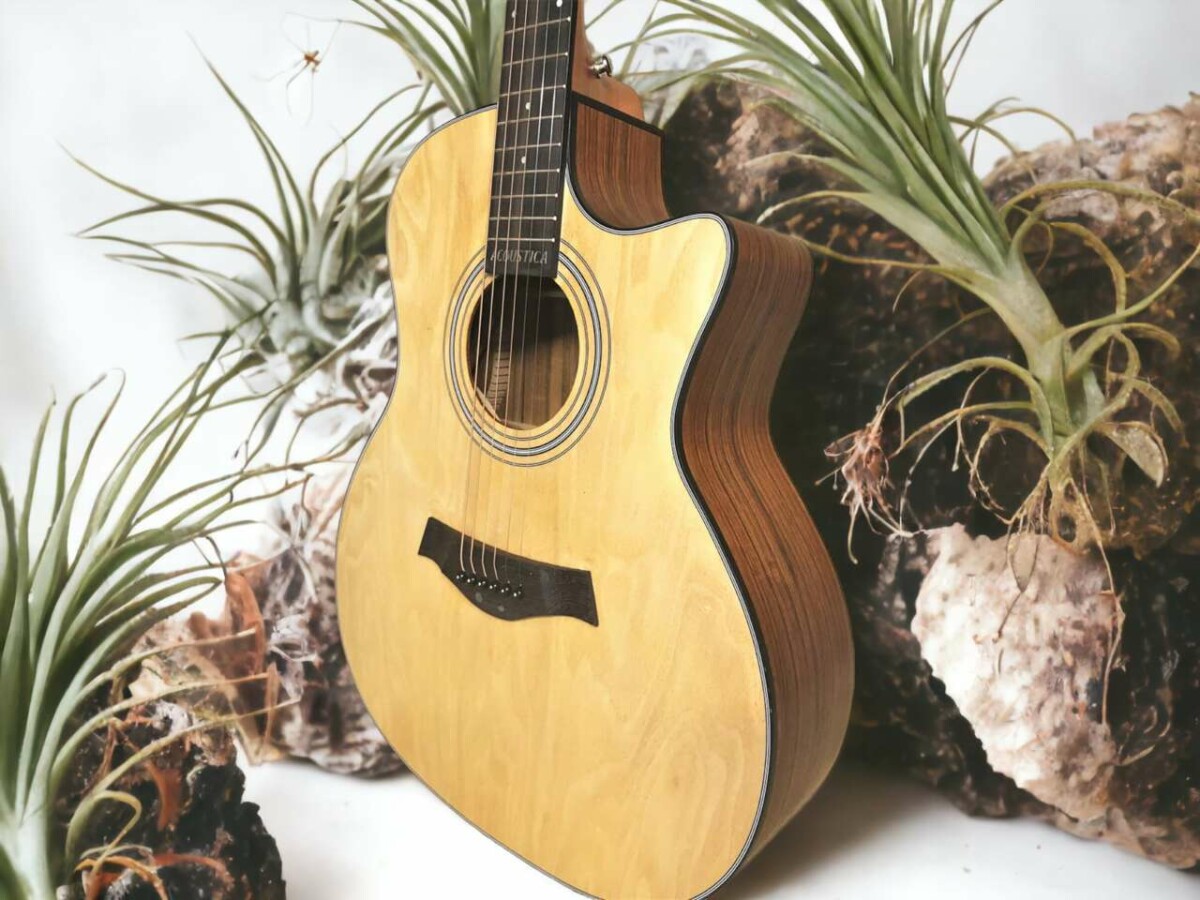So, you’re at this major crossroads, right? You’ve got a guitar in one hand and a violin in the other. The guitar’s got that enticing rhythm while the violin exudes this irresistible classic appeal. Can’t figure out which one’s a tougher nut to crack?
Then let’s get down to business. We’re about to navigate the intricate maze of chords and bowing methods, taking a closer look at what each instrument brings to the table. We’ll dig deep into the unique hurdles and pay-offs that come with each instrument.
By the end of this, you’ll have a clearer picture. You’ll know which one’s your jam in this wild ride of music.
Is Violin Harder to Play than Guitar?
Both the guitar and violin come with their unique challenges. Expect a steep learning curve with the violin due to the need for perfect intonation, while mastering guitar involves grappling with chord shapes in a manner that can be quite tough on your fingers. The “harder” instrument to learn relies heavily on personal preference and natural aptitude.
Understanding the basics of playing the violin? It’s not exactly a piece of cake. The unique challenges it presents, like mastering the bowing technique and dealing with fretless finger placement and tuning, bring a whole new level of complexity. As someone who’s strummed a guitar for years, believe me, playing the violin is an entirely different ball game.
Strumming chords on a guitar, while it has its own set of challenges, is nothing compared to the pinpoint precision required for finger placement on a violin’s fretless fingerboard. It’s all about getting your fingers in the exact right spot to hit that perfect pitch. No frets to guide you – it’s all about trusting your ear and the muscle memory you’ve developed through countless hours of practice.
Speaking of practice, it’s non-negotiable when it comes to the violin. There’s no hiding behind a strum or a pick here. Your bowing technique is your lifeline. It might sound straightforward, but it’s all about balance, pressure, speed, and direction. Apply too much pressure, and your note might sound more like a shriek. Too little, and it’s barely audible. Finding that sweet spot is key and trust me, it takes time.
The Art of Intonation in Violin Playing
You might think that nailing intonation in violin playing is just about hitting those notes dead-on. But, it’s not that simple. There’s a lot more to it. It’s all about getting a feel for the tiny details of pitch and tone, kind of like the precision needed when you’re forming a chord on your guitar, but with extra layers of complexity.
See, with a guitar, you’ve got frets as a physical guide for your fingers. But on a violin, it’s just you, the air, and your sharp ear. Makes it feel like you’re walking a tightrope, right?
Violin intonation techniques need you to tune into your inner Daredevil, to develop a superhuman level of auditory sensitivity. It’s a whole different ball game compared to playing the guitar. Simply knowing where your fingers should land isn’t enough; you’ve got to be able to hear when you’ve hit the musical jackpot. The violin’s fretless neck is a blessing and a curse – it allows for tiny pitch adjustments that can either send your performance soaring or tank it.
When you’re a guitarist, your fingers sort of know their spots on the fretboard, and the frets give you physical feedback. But with a violin, you’re winging it, relying on your ear to guide you. That means your ear needs to be as on point as your instrument.
Think about the times you’ve grappled with the complexities of chord changes and picking techniques on a guitar. Now, imagine doing all that and also ensuring each note is bang on. That’s the art of intonation in violin playing, and it’s a whole other level of challenge. It’s one of the main reasons why the violin is often seen as a tougher instrument to master compared to the guitar.
Challenges of Bowing Technique for Violin Beginners
Starting off on your violin endeavor, nailing the bowing technique is probably gonna be one of your initial challenges. It’s a whole different ball game compared to just strumming a guitar—it’s not only about how fast you can go, but you’ve also got to get the pressure and direction spot on.
Bow Pressure Control
Getting a handle on the bow pressure of your violin is like trying to tame a wild horse when you’re just starting out. It’s super crucial in producing a sound that’s more symphony orchestra and less nails-on-a-chalkboard. It’s sort of like trying to nail those tricky chords on a guitar, but with the added fun of figuring out bow speed. You see, it’s not as straightforward as belting out a tune on a guitar.
With a violin, you’ve got to strike the perfect balance between pressure and speed, or you’ll end up with a sound that’s either too scratchy or way too faint. Yeah, it’s a tough gig, but keep at it, and you’ll see progress. After all, every virtuoso had to start somewhere.
It’s a bumpy ride, but trust me, it’s one heck of a satisfying one when you finally get it right. So, grab your violin, and let’s get to work. After all, practice makes perfect, right?
Bow Speed Mastery
Learning to play the violin isn’t just about putting pressure on the bow, it’s a whole lot more than that. It’s kinda like learning guitar techniques, where you need to nail those chord changes. But with the violin, there’s way more involved when it comes to mastering the art of bowing.
First off, you’ve gotta nail the bow speed. Slide too fast or too slow across the strings, and the sound’s off. It’s all about finding that sweet spot.
Next up, you’ve got pitch control. It’s like hitting the right fret on a guitar, but guess what? There’s no visual cues to guide you. So yeah, it’s a bit of a mind-bender.
Last but not the least, it’s all about making the pitch and bow speed vibe together. It’s a delicate balance and that’s what makes playing the violin a bit of a challenge. But hey, the payoff is pretty sweet when you finally master it.
Direction for Different Dynamics
Just when you think you’re getting the hang of controlling the speed of your bow, bam! You’re hit with the tricky task of managing its direction. And trust me, it’s no walk in the park for someone just starting out.
Unlike casually strumming out a tune on a guitar, the way you handle the bow on a violin can seriously tweak the dynamics of the sound. It’s quite the balancing act.
Lean too hard, and your music might come off way too intense; go too soft, and it could end up sounding a bit feeble. It’s not as simple as just plucking a guitar string. Each string on the violin demands its own unique bow speed and pressure. It can get a bit maddening, especially if you’re reminiscing about the good old days when you could whip out a catchy tune on your guitar in no time.
But hey, don’t get too caught up in the struggle. Keep in mind that mastering these techniques is what’ll eventually make your violin sing its own distinct, beautiful melody. So hang in there, and keep at it!
Grasping the Complexities of Guitar Chord Structures
As you dive into the world of guitar playing, you’ll soon realize that nailing down chord fingerings feels a lot like picking up a new language. Think of the guitar’s neck, with all its different positions, as your very own language dictionary.
It’s an adventure that’s chock-full of complexities. But hey, don’t let that scare you off. With enough practice, you’ll get the hang of these techniques and pretty soon, you’ll have a killer repertoire of chords under your belt.
Mastering Chord Fingerings
Getting the hang of guitar chord structures might seem like trying to solve a Rubik’s cube blindfolded. But don’t sweat it, it’s all about getting your fingers to do the walking and talking. Let’s dive into it:
First up, we got barre chords. Those are the ones where you gotta press down on multiple strings at once. Seems like a Herculean task, right? Especially if you’re new to this. But trust me, with regular jam sessions, your fingers will learn the ropes.
Moving on, you need to get your head around the idea of open and closed chords. Think of them as the ABCs of guitar music. Once you get these down, you’re basically laying the groundwork for your musical journey.
Finally, don’t skip practicing. It’s like going to the gym, but for your fingers. Over time, they’ll build up the strength and flexibility needed to nail those chords.
If it all seems like climbing Everest at first, don’t panic. Learning guitar is a marathon, not a sprint. So, relax, enjoy the ride, and keep those strings humming.
Understanding Neck Positions
As you’re getting the hang of those chords, grasping neck positions on the guitar is something you’ve got to nail. It’s a tricky element specific to the world of guitar playing. Unlike the violin, which has a smooth fingerboard without frets, the guitar’s neck is dotted with these little guides that help your fingers hit the exact note. But don’t be tricked into thinking it’s a walk in the park. Each string on the guitar comes with its own lineup of note positions, and the real test is learning how to switch between them seamlessly.
In contrast, placing your fingers on a violin feels more natural, but it demands a sharp ear for pitch. When it comes to guitar, nailing the right neck positions can make your chord shifts smoother and quicker. It’s a tough learning journey, but once you’ve got it under your belt, you’re practically halfway to becoming a guitar guru.
The Journey to Mastery: Violin Versus Guitar
Embarking on the journey to master either the violin or the guitar is no small feat—it’s a wild ride that’ll push your musical skills and commitment to the edge. In my own journey, I’ve discovered that each instrument offers its own unique set of challenges, but one thing rings true for both: practice makes perfect.
- Getting to Know Your Instrument: With the violin, there’s no roadmap—you’re dealing with a fretless instrument, so it’s all about fine-tuning your ear to nail those notes. The guitar, on the other hand, does have frets to guide you, but don’t get too comfortable—juggling multiple strings and tackling complex chord structures can be a real mind-boggler in the beginning.
- Honing Your Musicality: Musicality is everything when it comes to playing the violin or guitar. For the violin, it’s all about mastering the art of bowing—controlling the pressure, speed, and direction of the bow to create a variety of tones. With the guitar, you’re going to be getting your fingers into some serious action, mastering fingerpicking techniques and playing around with chords.
- Time and Dedication: Here’s the kicker—mastering the violin can be a time suck. The bar is set super high, especially in the realm of classical music. The guitar may seem like a walk in the park in comparison, but don’t be fooled—it has its own learning curve, especially when it comes to reading music and figuring out different ways to play the same note.
Unpacking the Difficulties of Reading Music for Guitarists
As a guitarist, you’re going to find that a big chunk of your struggle is all about nailing that ability to read music. Remember when you first picked up the guitar and strumming a few chords felt like a walk in the park? Well, then sheet music entered the picture and suddenly, the guitar wasn’t as simple as you first believed.
Reading music is a different beast, it pushes you in ways that just playing by ear or from memory can’t. Every squiggle on the page matches up with a specific string and fret on your guitar, and it’s all on you to piece it together. It’s kind of like learning a new language where symbols are your alphabet and chords are words.
Then there’s the mind-boggling part where the same note can pop up in different spots on the fretboard. For instance, that pesky C note can be found on the third fret of the A string, the eighth fret of the low E string, or the tenth fret of the D string – talk about a brain teaser!
Then, there’s the whole drama of picking up fingerpicking techniques. You’re trying to read the music, locate the note on the fretboard, and figure out which finger to use – it’s a mental and physical gym session that can get pretty intense.
But hey, don’t sweat it. Every guitarist has been in your shoes. With time, reading music will start to feel like second nature and you’ll get to put more energy into fine-tuning your playing. So, keep pushing. It’s a tough road, but it’s also how you grow into a well-rounded and seriously skilled guitarist.

